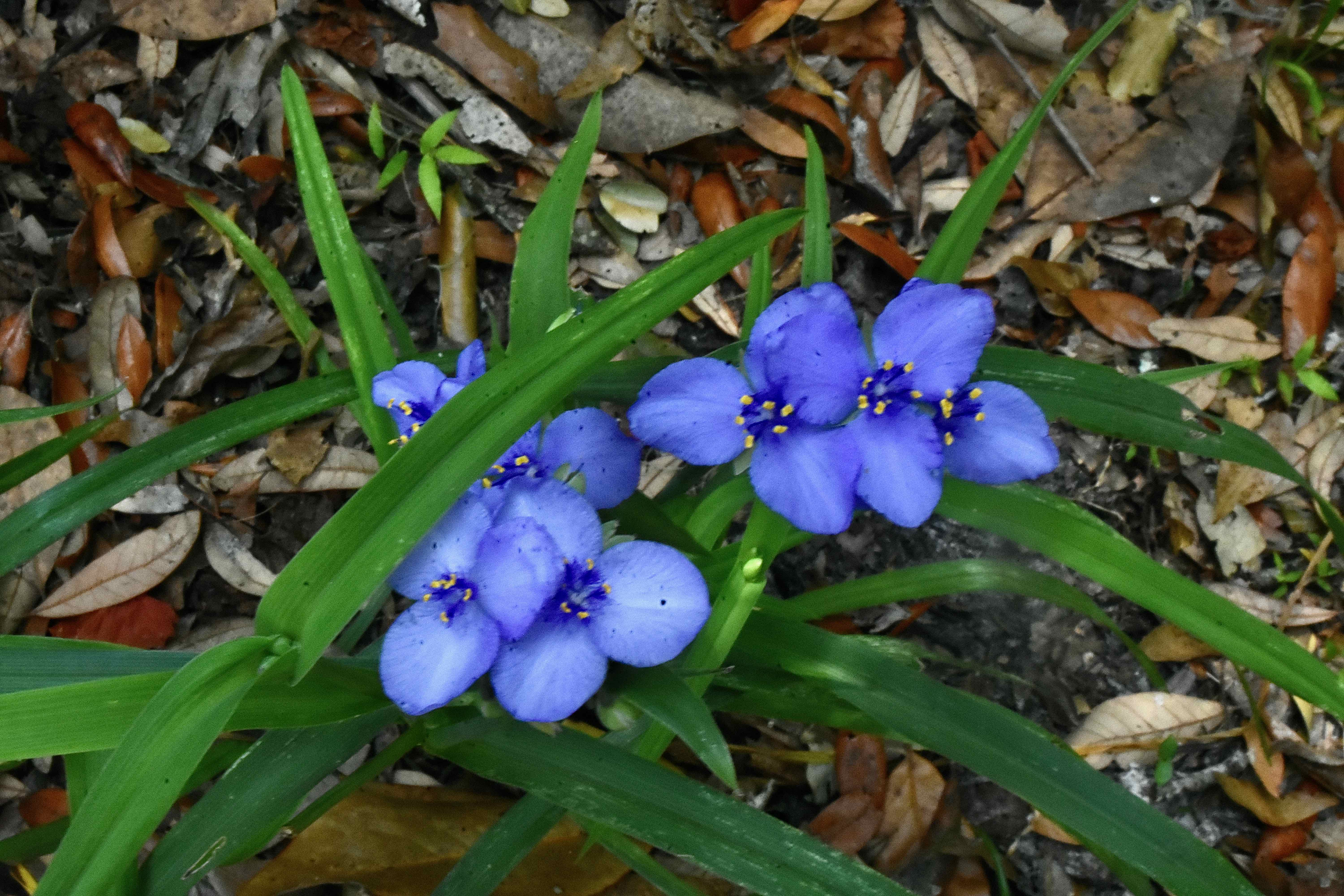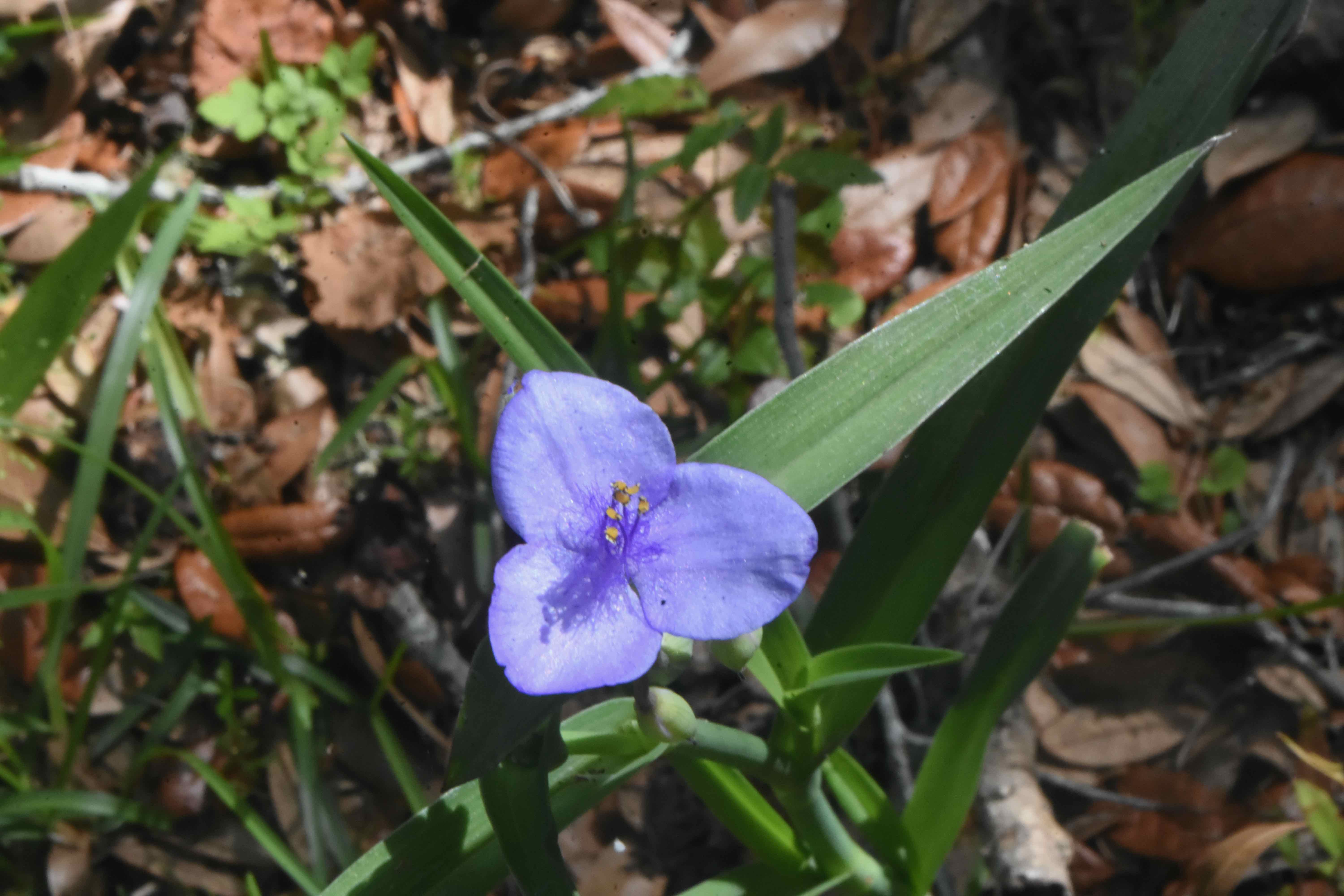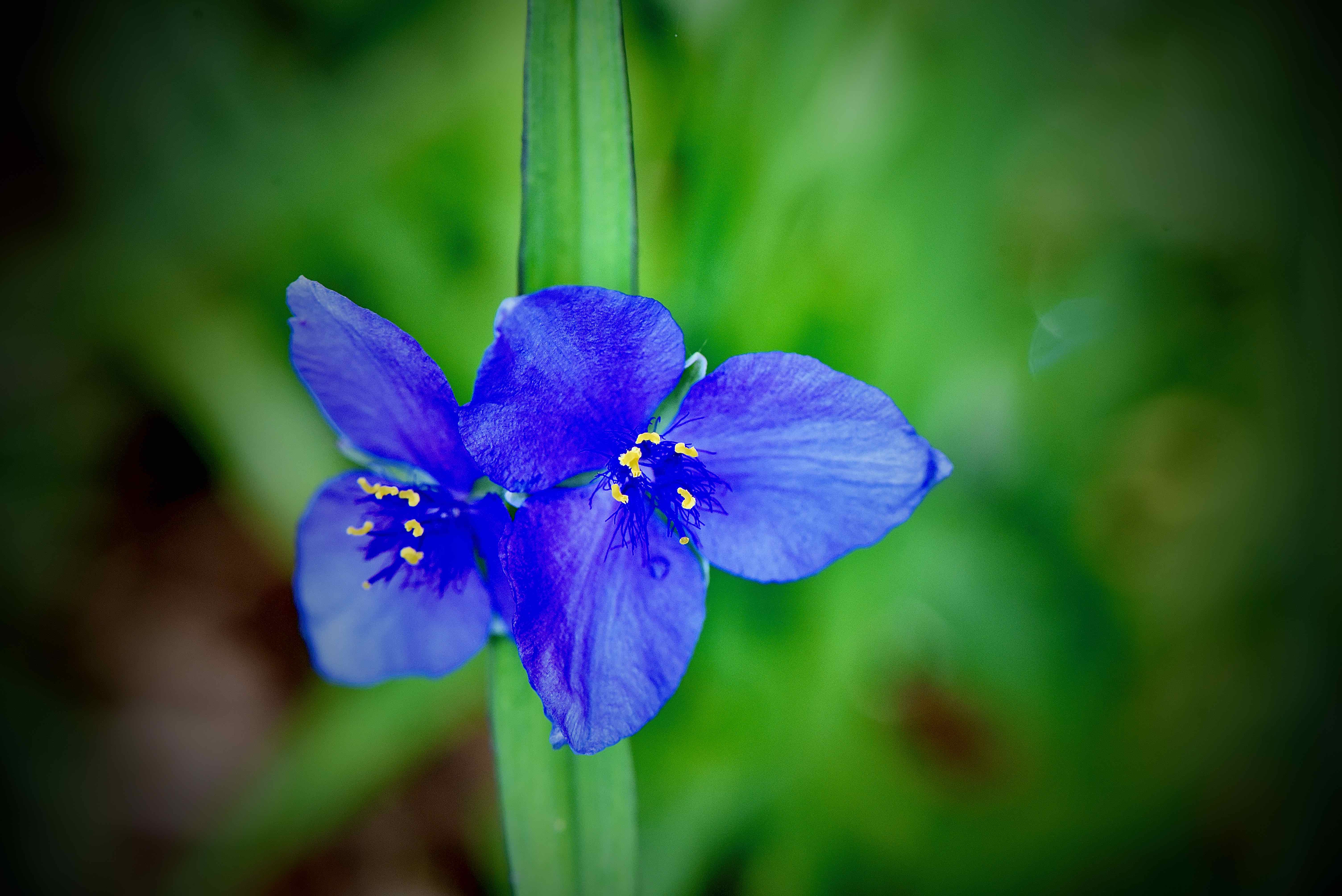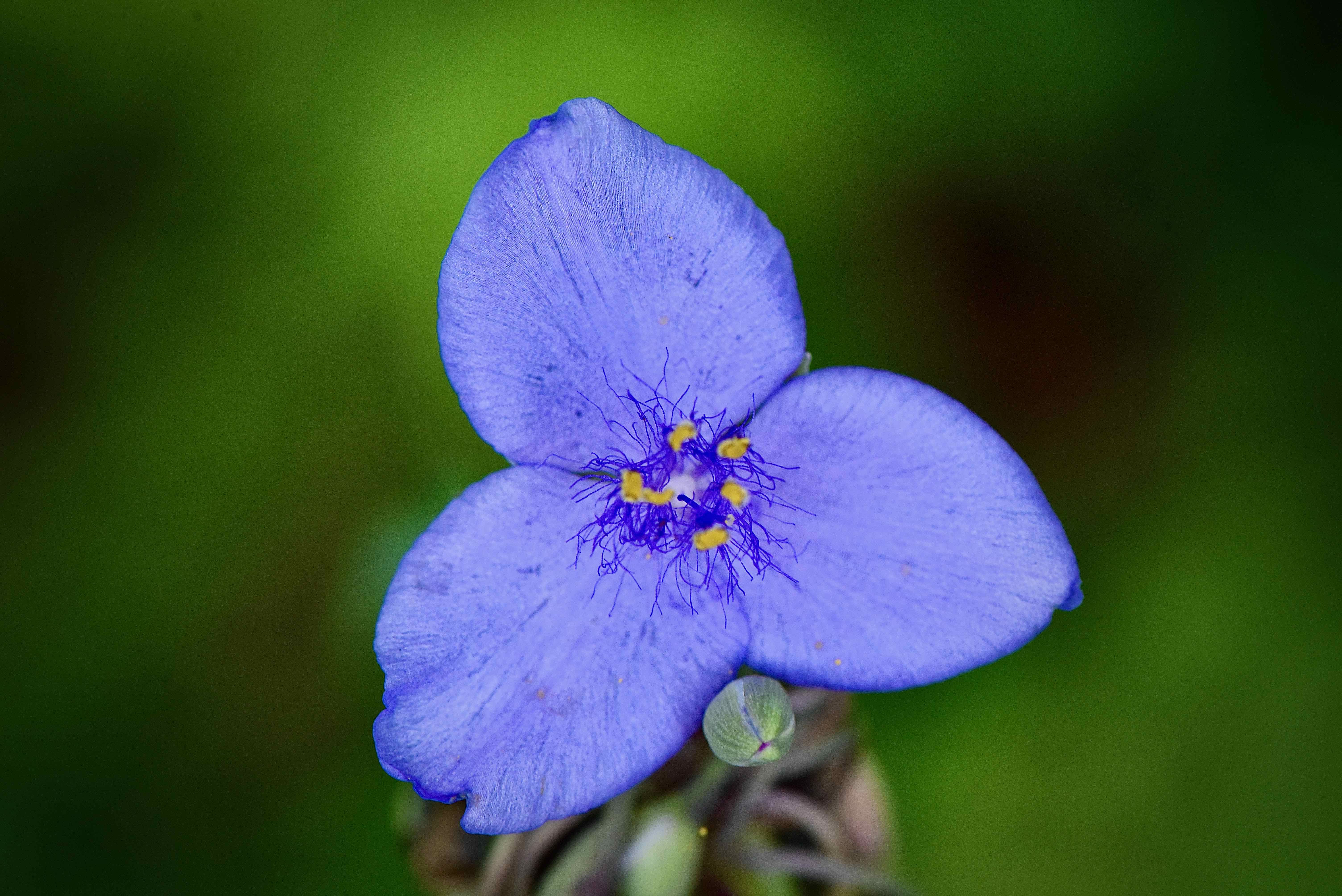
Bluejacket aka Ohio Spiderwort, photographed at Blue Spring State Park, Orange City, Volusia County, in May 2023.
Now you see it, now you don’t. The flowers of Bluejacket, also known as Ohio Spiderwort, do a disappearing act.
Walk by the plant in the morning and you’ll see a beautiful blue bloom in all its glory. Walk by the same plant in the afternoon and it will be gone nearly without a trace remaining as witness to what was once there. You might wonder, “did I really see it?”
Well, yes you did.
Bluejacket, Tradescantia ohiensis, is what’s known as a dayflower, putting out blooms that are here and gone in 24 hours or less. In the case of Bluejacket, way less. The following morning new blooms will have taken the place of the old, but their lives will be equally short. Bluejacket is a Florida native and one of the most abundant and widespread dayflowers in North America. Its disappearing act is typical of its genus.
Its native range extends across much of the eastern United States from New England, across the border into Ontario, westward to the Mississippi Valley, south to Texas and along the Gulf Coast into Florida. Its range in the Sunshine State includes the Panhandle and much of the Peninsula as far south as Sarasota, Highlands and Brevard counties.
Bluejacket is not native to South Florida, but several nurseries in Palm Beach, Broward and Lee counties that specialize in native Florida plants are known to offer it for sale.
Bluejacket is an herbaceous plant, meaning the stems are soft, not woody, and will grow to two to three feet tall. It grows in multi-stemmed clumps; each stem may be branched near the top. The leaves are long and narrow — described variously as lance-shaped, linear or grass-like — growing alternately along the stem in a spiral pattern. They are entire, meaning no lobes or teeth along the edges.
The flowers are about an inch across, three-petaled, pink to blue to purple in color, rarely white. The stamen are a deep blue with bright yellow tips. All in all, it’s a beautiful flower. They’ll bloom in the morning but begin to fade by early afternoon. By late afternoon, they’ll be only a memory.
Blooming season in Florida begins as early as February or March, later in spring farther north, and will continue into the fall. The flowers attract pollinators, particularly bees.
Bluejacket is a (very) long-lived perennial.
It is a highly adaptable plant, able to thrive in dry or wet sites, full sun or part shade. It takes to a variety of soils types and acidity levels. Salt, however, is its kryptonite. It has little to no tolerance for salt water or salt spray. Favorite habitats include disturbed areas, the edges of hard wood forests and places within forests where sufficient light peeks through.
Bluejacket is known for easily hybridizing with other nearby day flower species. There are at least eight recognized regional hybrids, according to the Flora of North America. The one in Florida is called T. Roseolen.
Bluejacket is widely used in landscaping, particularly as a border plant, as a ground cover and in wildflower gardens. The easiest way to propogate Bluejacket is by simply dividing the clumps into individual plants, but it can also be grown by seed.
It spreads quickly, which is both blessing and curse. It can fill in an area quickly, but it can spread beyond its intended borders. It’s a difficult plant to get rid of if you so choose.
Bluejacket, like many “green” spiderworts, is edible; the stems and leaves can be stir fried, the flowers used in salads. The usual word of caution: make sure you know what you’re putting in your mouth, because there are spiderwort species that are poisonous.
There is a Civil War side note to Bluejacket, believe it or not. Some southerners somewhere along the line took to calling our guy “confederate spiderwort” perhaps taking offense to the usual Bluejacket or Ohio Spiderwort. Also note the reference to the state of Ohio in the scientific name.
The name Bluejacket fits this plant because of its beautiful blue flowers but also because of its connection to Ohio. You probably are aware that Ohio is the “Buckeye State” and state residents are sometimes referred to as Buckeyes.
But Bluejacket is another nickname, this one stemming (so to speak) from the Civil War. Ohio sent more men per capita to fight for the Union than any other state, hence Bluejacket. (It’s also the nickname of the National Hockey League team that plays in Columbus. The team fires off a Civil War era cannon (sans cannonball) whenever the home team scores a goal.)
So Bluejacket fits the plant a second way, the “lost cause” be damned. Long live the Union.
Other common names for our guy include plain old spiderwort and common spiderwort. It is a member of Commelinaceae, the dayflower family.



